I shot this photo of a Grey headed flying fox in Australia exactly eleven years ago but I pulled it out of my photo files because it so interesting to me in so many ways. This is one of the native Australian animals that I was hoping to photograph during my Australian road trip.
A Grey Headed Flying Fox with her Young
This is a mother nursing her young! Bats are mammals like you and me and produce milk to nourish their babies. The little boy bat in the photo (you can see his wiener) is hanging upside down and stretching his little neck as far as he can to reach mom’s nipple. Yes, they hang upside down all day so of course they nurse upside down! There is one exception: bats turn right-side up and hang by their thumbs when it’s time to poop!
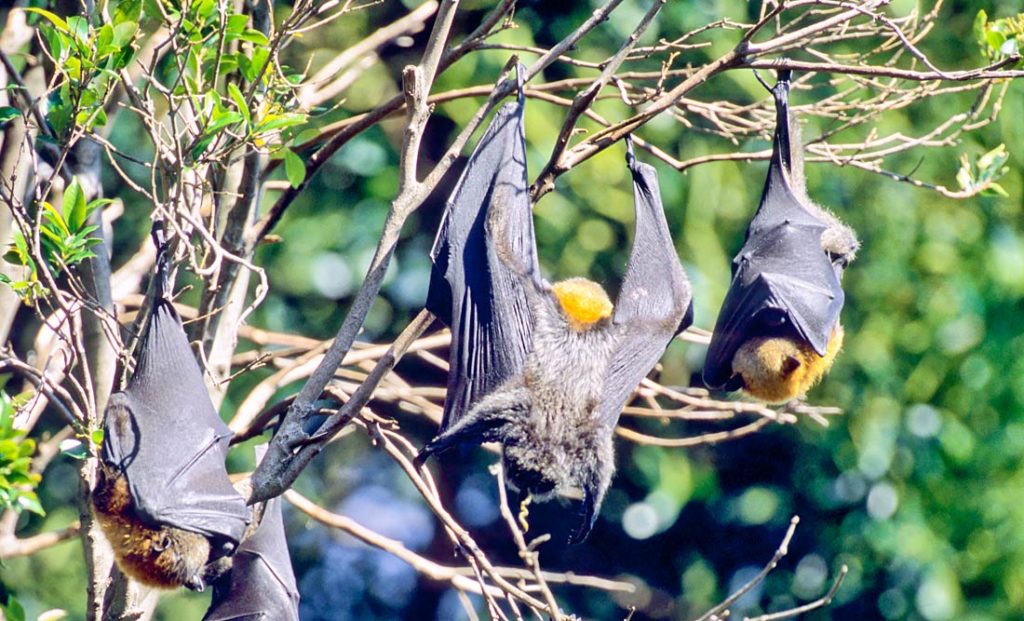
The Grey Headed Flying Fox is the Biggest Bat in Australia
Australia is a land of giant bats and this is the biggest bat of them all: The Grey headed Flying Fox (Pteropus poliocephalus). Adults have a three foot wing span! This species of bat mate once a year. Conception occurs in June-May and after a four month gestation, a single young is born in October-November.
Why are These Australian Animals Called Flying Foxes?
You can really see why these Australian animals are called flying foxes. This bat has such a sweet little canine-looking face and beautiful fox-like fur. They’re also known as fruit bats (because they eat pollen, nectar, and fruit!) And I love the peaceful look on her face.
One way to tell the Grey Headed Flying Fox apart from other flying foxes is their fur. The Grey headed flying fox leg fur extends down to their ankles! Furry flying foxes!
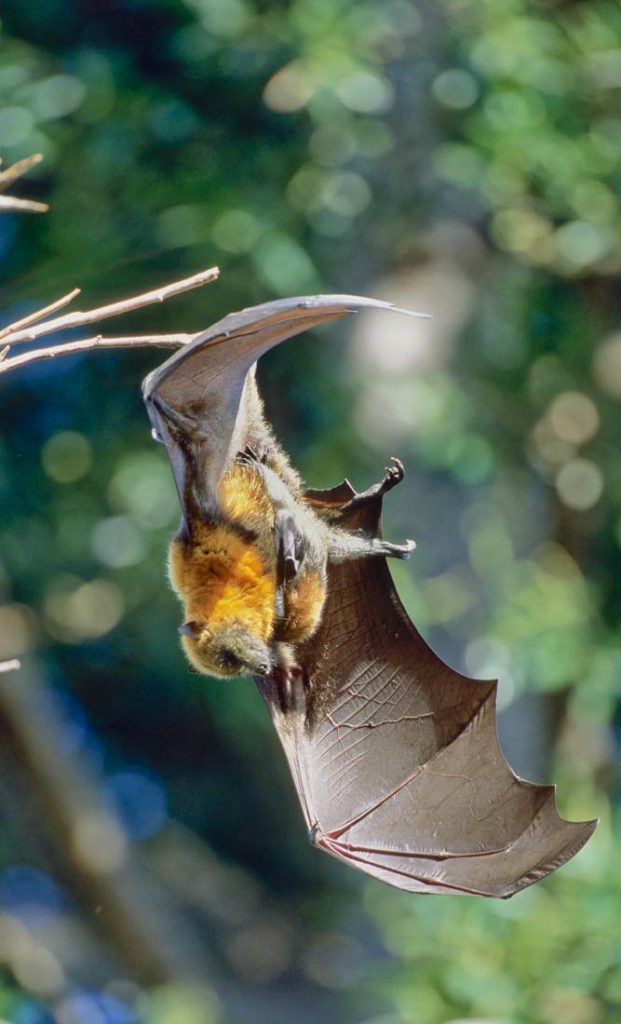
Their Detached Claw is Used for Grooming
Look at those amazing “thumb” claws! You can clearly see in the juvenile bat’s wing how the bones are almost exactly like a human hand and arm, just longer and skinnier. Imagine if you had longer finger bones with skin between them. Do you think you could fly? Also notice how mom is using that large detached claw for grooming. Awesome!
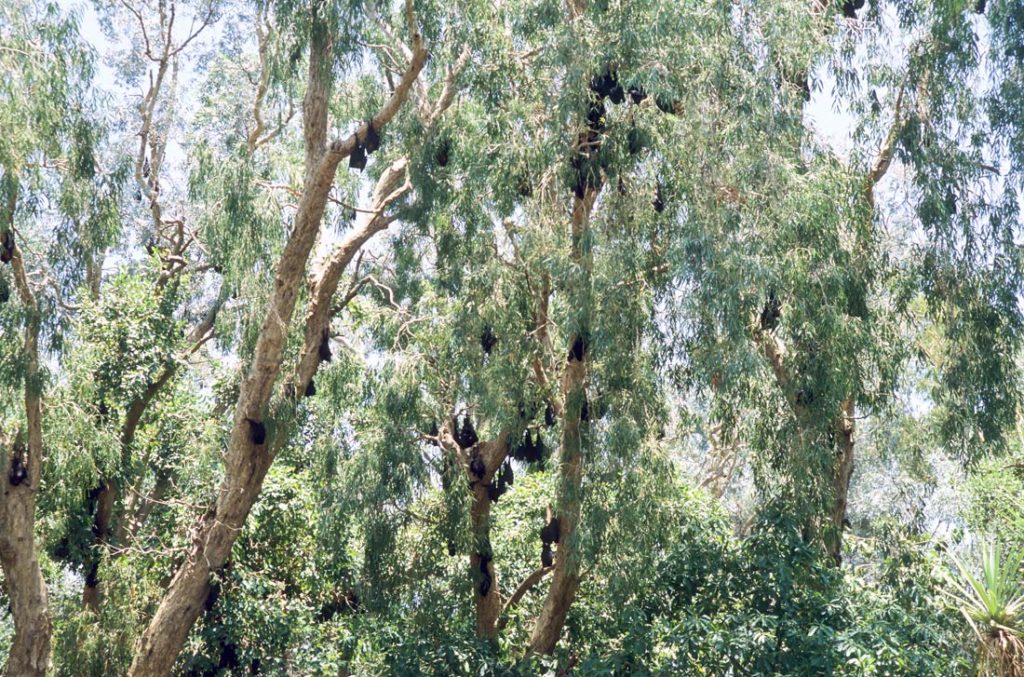
The Flying Foxes of Yarra Band Park
Flying foxes roost in huge noisy colonies during the day and disperse at night to feed. I photographed this particular colony in November of 2002 in Melbourne’s Royal Botanic Garden, right in the middle of the city. At the time there were nearly 20,000 flying foxes in this tiny park! Little did I know that just months after my visit (March 2003), they would begin a huge campaign to remove all the bats from the park. They successfully scared them all away (to preserve the trees and plants that were suffering in the Botanic Gardens) and moved the colony a couple miles away to Yarra Band Park, Kew. The photo I took shows the last summer they would spend in the gardens.
FUN FACT! Did you know a flying fox roosting site is called a camp or campsite!
This next video shows how the bats are happy at their Yarra Band Park home! At the end of the video you can see another Grey headed flying fox with her baby bat! It is so adorable when she wraps him up with her wings.
P.S. I love flying foxes! Hip hip hooray for bats!
Want to learn more about Australian animals? Check out our article on the amazing echidna!
Enjoyed this article? PIN IT!
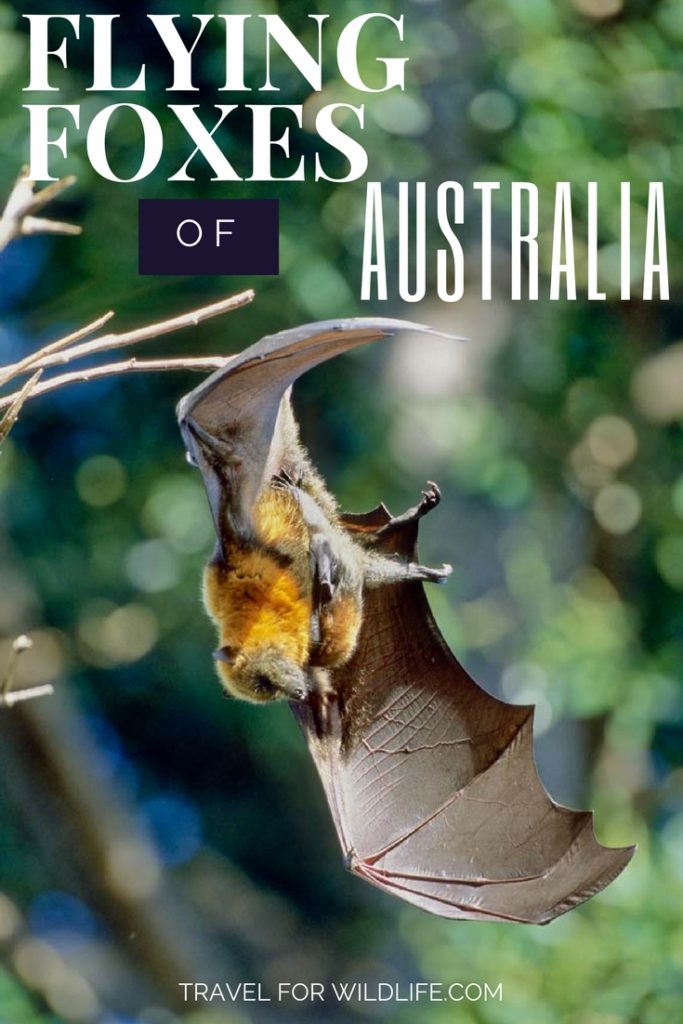

Hal Brindley
Brindley is an American conservation biologist, wildlife photographer, filmmaker, writer, and illustrator living in Asheville, NC. He studied black-footed cats in Namibia for his master’s research, has traveled to all seven continents, and loves native plant gardening. See more of his work at Travel for Wildlife, Truly Wild, Our Wild Yard, & Naturalist Studio.

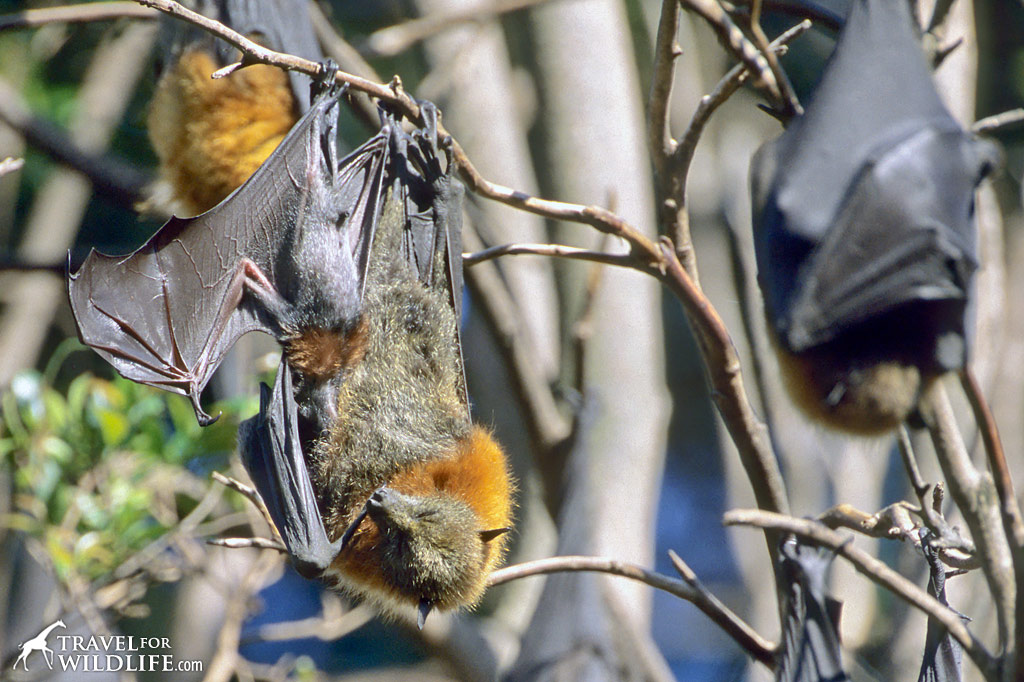
Janine Duffy
Tuesday 17th of December 2013
Hey, I love this photo and this story! Australia's megabats are one of the most exciting wildlife species you can see downunder. There's nothing quite like the sound of them feeding at dusk - all sorts of squeaks, squeals and sounds of true happiness!